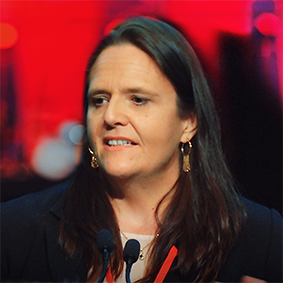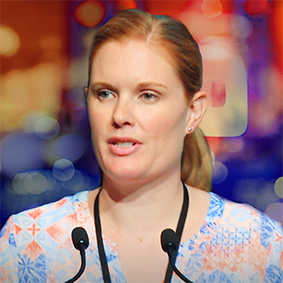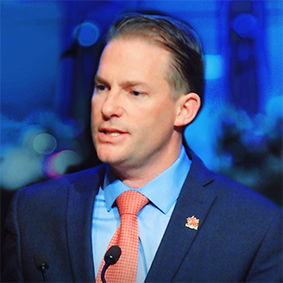ACCESS TALKS: WHAT IS INCLUSION
It’s not a program or place. Inclusion is; how a school operates, a sense of belonging and success for each and every student. Dr Carol Quirk challenges the definition of what inclusion in schools is, and more importantly, what it is not and what is required for a school to deliver authentic inclusive education
Duration: 10 mins 47
This transcript has been corrected & edited slightly for clarity
When we think about what inclusion is we want to think about what’s going on in the classroom, not just the place. Have any of you heard for example, “Inclusion doesn’t work for all students?” or, “Some kids can’t be included,” or, “Some kids need small group instruction and we can’t do that in regular Ed,” ‘We have 25-28 students in a class and we really can’t spare the time to include students with disabilities.” To all of that I would echo the words of Jody Carr, which is; ‘that is not inclusion’. If it’s quote, “Not working” the student is not really included, they’re just physically there.
So, the work of developing an inclusive school is exactly that; making change and school reform. It’s about having a sense of belonging so that students with disabilities feel like they’re a part of the school community and other children also feel like they’re a part of the school community. In inclusive students with disabilities are participating in all aspects of school life including the extracurricular activities and the assemblies, and the functions that are both academic and non-academic. We think about each and every student.
Many of you may have heard the term ‘All Means All’ and we use that often among many of our communities to really get across the meaning of ALL students, but I keep hearing, echoing in my mind, when I’m in some schools, “Well all students but not THOSE students.” So I have begun to use the term ‘Each and Every Student.’ Every student without exception. We’re focused on success for all students, not just those with disabilities.
In our early work with school buildings–looking at schools as the unit of change, schools as the place where implementation occurs–we went in through the special education door; working with the special education director, working with the special education staff and of course the general educator receiving students and the Principal but we really didn’t focus strongly on the quality of the general education teacher and the practices they engaged in. So we found ourselves perhaps doing some good planning for individual students, but we weren’t always placing them in classrooms where the teaching was really effective, so one of the things we’ve done is to really look at what’s going on in the classroom.
We don’t want ‘Fred’ who uses a wheelchair and has a teaching assistant in a corner, with ‘Mrs. Jone’s and ‘Mrs. Cooper’ trying to figure out why poor Fred doesn’t feel like a part of his class. That is not a classroom where inclusion is going to be successful because Fred is frankly not included. In inclusive classes we don’t have ‘inclusion teachers’; if we have inclusion teachers what does that make everybody else? They’re exclusion teachers.
In an inclusive school we don’t have inclusive classes, because then what is everything else but an exclusion class. We also don’t have classes that are labelled by the name of a disability or programme. We have classes with names of grades, or numbers. It is also not a class where you have a large proportion of students with disabilities, and then also students who are struggling. Teachers tell us over and over that that is a very hard class to teach and frankly they have a hard time keeping up with the standards.
So when we think about a school that’s truly inclusive we think about the practices of the educators, the practices of the leadership. Inclusion is not a programme, it’s not a place, it’s how a school operates.
I’m going to talk a little bit about these four areas.
The placement and participation of a student in a school; what happens among the educators as they work together; how teachers actually teach and how we provide supports in interventions for students who are struggling; whether they’re students with disabilities or students who may speak other languages and are learning English for the first time, students who live in poverty, or who are from other cultures. In terms of placement and participation is the student in a school that they would attend if they did not have a disability? Are they in an age-appropriate general ed. classroom with a typical schedule like everyone else?
I would also extend this idea of a typical schedule to how things operate within the classroom. Sometimes, if a student has more extensive needs, teachers will try to buddy-up that student with a peer, which is a great idea but if the student with a disability is always the one being helped, teachers need to be really careful that they’re not setting up a situation where the student with a disability is in a patronised situation. We want to provide supports so that student is engaged in the classroom and an all parts of the school and all school activities.
The biggest barrier I have encountered in almost 30 years is time. The way schools are structured, in traditional fashion, usually sees no time built in to the schedule for special educators and general educators to actually co-plan so they can co-teach and co-assist students. We have been able to work with schools to re-organise how they schedule, so there is time for co-planning as well as co-teaching but it requires administrators to give up the idea of being the master of their schedule and allow others into that process.
Another big movement we are seeing right now is the use of data. There’s a large push to have reading and literacy and numeracy data screening systems so educators can make informed decisions not only using the kinds of testing that they may do in their classroom but also more norm-referencing testing as well as qualitative testing. Some of this data is not coming from a literal test but may be from situational assessments done in the classroom. The biggest barrier we find here is that teachers don’t always know how to use data so this is an area where our universities need to step up, and we’re finding our school districts need to provide additional training and support in how teachers can collaborate together to use data to make good instructional decisions. There are going to be students who may not be responding to the general instruction even with additional support; may not be quite learning in the way that teachers thought they could or should–so teachers need to know how to design individual supports for these students with more intensive needs. Now, here again, you can put a general education teacher and a special educator together in a room and they may figure it out, they may come up with a very good plan, but sometimes they’re challenged if they don’t really—together–have all of the knowledge to figure out how to make that 30 minutes of planning time efficient.
We’ve come up with some forms and structures that will help teachers plan so the curriculum instruction can be delivered by both general and special educators. I go into classrooms way too often where the general educator is teaching the class and the special educator is floating around the room helping individual students who may have disabilities or who may be struggling to learn. Worst-case-scenario they’re standing on the side trying to figure out what they should do. There are actually really good co-teaching structures and a lot of the training we do and support given to schools is teaching teachers how to teach together and how to select the type of co-teaching structure that matches both the students and the content that they’re trying to teach. You may have heard about Universal Design for Learning and if you haven’t you should look it up. It is a wonderful way of looking at how to design instruction from the beginning so more learners, who may be struggling, can access content. Teachers are using more and more flexible groups so that in addition to whole-class instruction and maybe some independent work, they’re creating flexible groups based on either ability level or student interest or they’re creating different stations for students to engage in work in different ways. When teachers do this and set up students to work together co-operatively, peers can actually mentor each-other and students can learn from each-other as well as having different opportunities to work on the content. Teachers will then also develop lessons that will address the individual goals of students who may have very unique needs.
And finally supports and interventions for those students with disabilities or who have other kinds of unique needs, really should have planning with family input, and consider how peers can be involved in the learning and teaching of those skills, figuring out what materials need to be modified or what technology might be added and then thinking of the specialised cues, prompts, and feedback.
Teachers have often relied on words to teach and we know that there are many other ways to prompt students and decrease dependence on teacher’s giving verbal directions.
Last updated August 21, 2018
- Philosophy in Practice [PDF]
- Is Your School Inclusive [PDF]
- Inclusive education means all children are included in every way not just in theory
[opens external site]
MORE ACCESS TALKS:

WHY INCLUDE
High quality education & supports enable all students to acquire success in their education and is the basis of an inclusive life and society.

TEACHER IMPACT
All classroom teachers have a role in creating schools & learning environments where all children can learn and feel they belong.

CHANGING MINDSETS
Whole school transformation requires courage, leadership & honest reflection to identify the need for change and set about making it happen.

AUSTRALIAN EXPERIENCE
Exemplar inclusive educational practices are happening in Australia. See the possibility and potential of inclusion here and now.

HOW WE INCLUDE
Creating inclusive classrooms & schools starts with vision, policy, systems change, curriculum design and teaching practice.
NOW EXPLORE ACCESS READS

WHAT IS INCLUSION
The promotion, adoption and implementation of inclusive practices, which involves changing policies, practices and attitudes within schools.

HOW WE INCLUDE
Inclusive classrooms and schools embrace universal design as the foundation for cultivating inclusive attitudes and practices.

CHANGING MINDSETS
Bringing about change one mind at a time is integral to improving the lives of people with disability.

AUSTRALIAN EXPERIENCE
Exemplar inclusive educational practices are happening in Australia. See the possibility and potential of Inclusion here and now.

WHY INCLUDE
All children have the right to be included, to be represented in, to have access to and to receive high-quality education and supports.

TEACHER IMPACT
All classroom teachers have a role in creating schools & learning environments where all children can learn and feel they belong.
A FAMILY ADVOCACY INITIATIVE
This site is edited and maintained by the Advocacy and Leadership Development team.
Image attributions: photos supplied and screenshots from Access Symposium videos.

